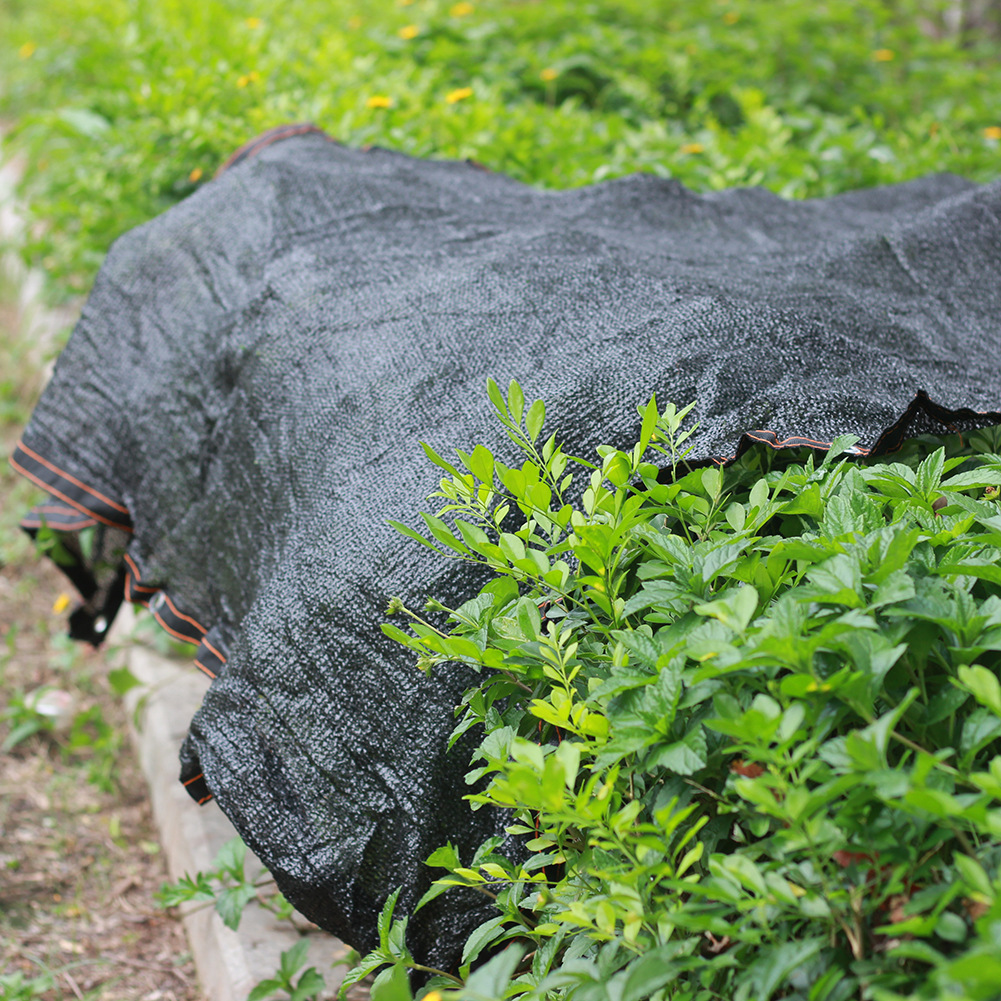How to Use Shade Cloth in Your Garden: A Complete Guide for Healthy Plants
Using shade cloth in your garden can significantly enhance plant health, especially during hot summer months or in regions with intense sunlight. By providing the right amount of shade, you can protect your plants from sunburn, reduce water evaporation, and extend the growing season. In this article, we’ll explore how to use shade cloth in your garden effectively, offering practical tips and insights to help you choose the best type and set it up correctly.

1. What is Shade Cloth and Why Use It in the Garden?
Shade cloth is a versatile fabric designed to provide varying levels of shade to protect plants from the harsh effects of direct sunlight. Available in different densities, or "shade percentages," it can block out a portion of sunlight while allowing air and water to penetrate.
Using shade cloth in your garden can help prevent leaf scorch, reduce water loss through evaporation, and create an ideal growing environment for plants that are sensitive to intense sun exposure. This is particularly important in regions with hot, dry summers, where prolonged sunlight can damage both young and mature plants.
2. Types of Shade Cloth and Their Uses
There are two primary types of shade cloth: woven and knitted.
-
Woven shade cloth is made from tightly interwoven strips of fabric, offering durability and strength, making it ideal for long-term use. It is best suited for larger structures like greenhouses or garden canopies.
-
Knitted shade cloth is lighter, more flexible, and easier to handle. It resists tearing and is less prone to fraying, making it a great choice for smaller gardens or temporary installations.
Shade percentages typically range from 30% to 90%, with lower percentages suitable for plants that require more sunlight, such as tomatoes or peppers, and higher percentages ideal for shade-loving plants like ferns or lettuce. For most vegetable gardens, a 30-50% shade cloth works well, while flower beds and sensitive plants may benefit from a 60-70% shade cloth.
3. How to Choose the Right Shade Cloth for Your Garden
Choosing the right shade cloth depends on several factors:
- Climate: Hotter regions might need a higher shade percentage to protect plants from intense sun, while cooler areas may require less coverage.
- Plant type: Vegetables, flowers, and herbs have different light requirements. Research your plants’ needs before selecting a shade cloth.
- Sunlight exposure: Consider how much direct sunlight your garden receives daily. Gardens exposed to more than 6 hours of direct sunlight might need a higher shade percentage.
Additionally, the color of the shade cloth matters. Darker colors like black or green provide more shade but can absorb heat, while lighter colors like white reflect sunlight, keeping the environment cooler.
4. Steps to Install Shade Cloth in Your Garden
Installing shade cloth is straightforward but varies depending on your garden setup. Here’s a step-by-step guide:
- Measure Your Area: Measure the area you want to cover, allowing for extra fabric on each side.
- Select Support Structures: Choose structures like poles, frames, or hoops to support the cloth. Ensure they are sturdy enough to withstand wind and weather.
- Attach the Cloth: Use zip ties, clips, or bungee cords to secure the cloth to the support structure. Ensure it is taut but not overly stretched to prevent sagging.
- Check Positioning: Adjust the cloth to ensure it provides adequate coverage while allowing sufficient airflow.
- Secure Edges and Corners: Double-check that all edges and corners are securely fastened to avoid damage from wind.
5. Maintenance and Care for Shade Cloth
Proper care can extend the life of your shade cloth:
- Cleaning: Remove the shade cloth periodically and clean it with a gentle brush and soapy water. Rinse thoroughly and allow it to air dry.
- Storage: Store the shade cloth in a dry, cool place during off-seasons to prevent mold or mildew.
- Repairing Tears: Small tears can be repaired with fabric tape or patch kits designed for shade cloth.
6. Benefits of Using Shade Cloth in Different Climates
Shade cloth is beneficial in various climates:
- Arid climates: It helps reduce evaporation and conserves water, crucial in areas with scarce rainfall.
- Tropical climates: It protects plants from the intense midday sun and heavy rains.
- Temperate climates: Shade cloth can extend the growing season by protecting against late spring or early fall frost.
Adjusting the shade cloth throughout the seasons can help maintain optimal plant growth and health.
Conclusion
Shade cloth is an invaluable tool for gardeners looking to protect their plants from excessive sunlight, reduce water loss, and create a more controlled growing environment. By choosing the right type and correctly installing and maintaining it, you can ensure a thriving garden year-round.
Ready to improve your gardening experience? Start by selecting the perfect shade cloth for your garden's needs, and watch your plants flourish. For more tips and expert advice on gardening, explore our website!

